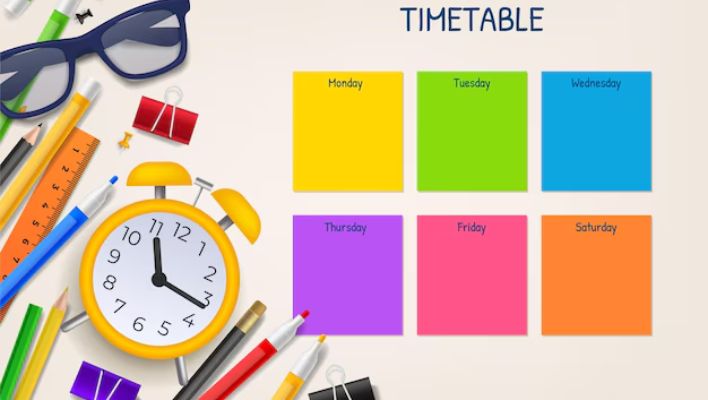Staying with ADHD can feel like running a marathon without an end line - continuously pushing forward, yet there is not enough grip in any way. When the burnout is a hit, it is more than only tiredness; It is a deep mental and emotional drain that also makes simple responsibilities impossible. If you are struggling with adhd burnout recovery, you are not alone. We are right here to support you each step of this ailment.
The good news? Recovery is feasible. By expertise the signs of ADHD burnout, enforcing tailored strategies, and giving yourself grace, you could rebuild your energy and reclaim manipulate.
Understanding ADHD Burnout: Why It Happens
The burnout is more than just feeling tired - this is a state of chronic physical, mental and emotional exhaustion. For people with ADHD, burnout often stems from:
- Constant mental overstimulation – ADHD brains work harder to filter distractions, leading to quicker fatigue.
- Masking & compensating – Trying to "act neurotypical" drains energy over time.
- Executive Dysfunction – Leads to difficulty and shutdown in prioritizing functions.
- Emotional deformity – Acute emotions (frustration, crime, shame) increase stress.
Unlike general burnout, ADHD burnout recovery requires addressing both cognitive overload and emotional fatigue. Without the right tools, many people cycle between hyperfocus and complete burnout, making it hard to sustain progress.

Signs You’re Experiencing ADHD Burnout
ADHD burnout happens when prolonged mental overload leads to exhaustion, emotional dysregulation, and issue functioning. Common signs encompass chronic fatigue, lack of motivation, and feeling crushed by easy duties. Early recognition of signs can help prevent stress and intellectual fatigue from deteriorating.
How do you recognize if you are burned outside, or simply finished temporarily?
- Mental fog and forgetting disease – Struggling to pay attention, even to the items that are revealed to you.
- Emotional sensitivity – Small frustrations sense overwhelming; common meltdowns.
- Loss of motivation – Tasks that used to excite you currently seem needless.
- Physical fatigue – Body aches, low power, or disrupted sleep.
- Avoidance & procrastination – Even simple tasks feel impossible to start.
If this sounds familiar, don’t panic. Recognizing burnout is the first step toward healing ADHD fatigue.
Read More: Are Habits Holding You Back or Lifting You Up?

Effective ADHD Burnout Recovery Strategies
Overcoming ADHD burnout starts with intentional relaxation, minimizing mental overload, and prioritizing proper well-being. Key techniques include setting corporate boundaries, adopting ADHD-pleasant company techniques, and training mindfulness. However, regularly making small adjustments can help restore energy and enhance day-to-day existence.
1. Prioritize Rest (Without Guilt)
Many ADHDers push through exhaustion, thinking, “I’ll rest when I’m done.” But with ADHD, "done" rarely comes. Instead:
- Schedule intentional breaks – Use timers to force pauses before you’re drained.
- Try “low-spoon” activities – Reading, doodling, or napping instead of scrolling.
- Permit yourself – Rest isn’t laziness; it’s necessary for ADHD brains.

2. Simplify & Reduce Demands
ADHD burnout often comes from too many unfinished tasks. Ask yourself:
- What can I drop or delegate?
- What’s truly urgent vs. what feels urgent?
- Can I break it into small stages?
Pro Tip: Use 2-minute rules - If any work takes less than 2 minutes, do it immediately. If not, schedule it.

3. Create an ADHD-Friendly Routine
Structure helps, but rigid schedules backfire. Instead:
- Time-block flexibly – Group similar tasks (e.g., emails, errands).
- Set 1-3 daily priorities – More leads to overwhelm.
- Use visual timers – Helps with time blindness.

4. Manage Emotional Overwhelm
ADHD burnout often includes intense emotions. Try:
- Mindfulness & grounding – 5-minute breathing exercises.
- Journaling – Dump thoughts to clear mental clutter.
- Talk to someone – Therapist, ADHD coach, or supportive friend.

5. Adjust Your Environment
External cues can reduce cognitive load:
- Declutter workspaces – Less visual noise = less distraction.
- Noise-canceling headphones – Help with sensory overload.
- Add movement breaks – Stretching or walking boosts dopamine.

Preventing Future ADHD Burnout
- Recovery isn’t just about bouncing back—it’s about building sustainable habits.
- Track energy patterns – Notice when you’re most/least productive.
- Rotate tasks – Avoid hyperfocus burnout by switching activities.
- Celebrate small wins – ADHD brains thrive on positive reinforcement.
Read More: Suffering in Silence: Breaking Free & Finding Support


